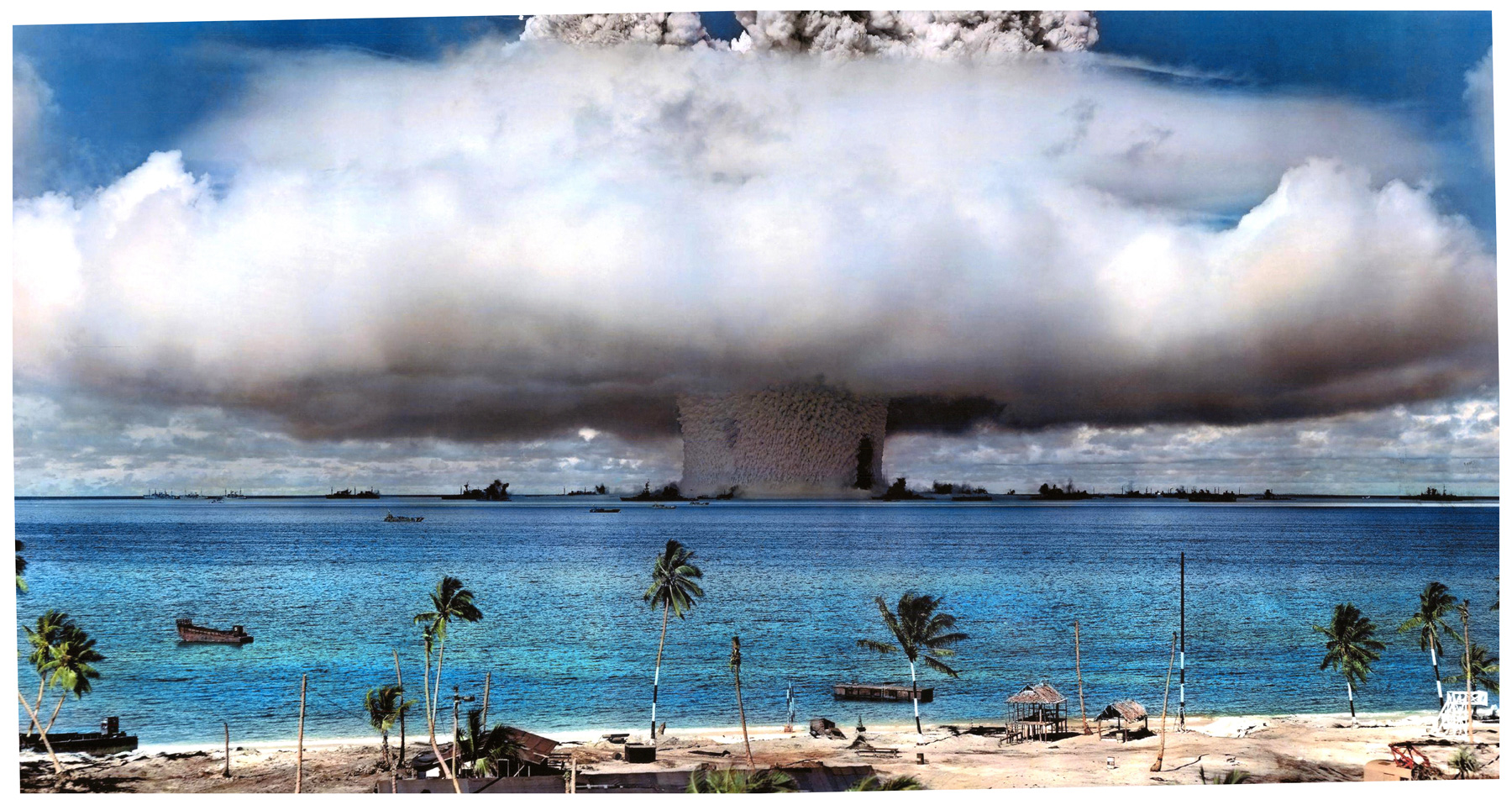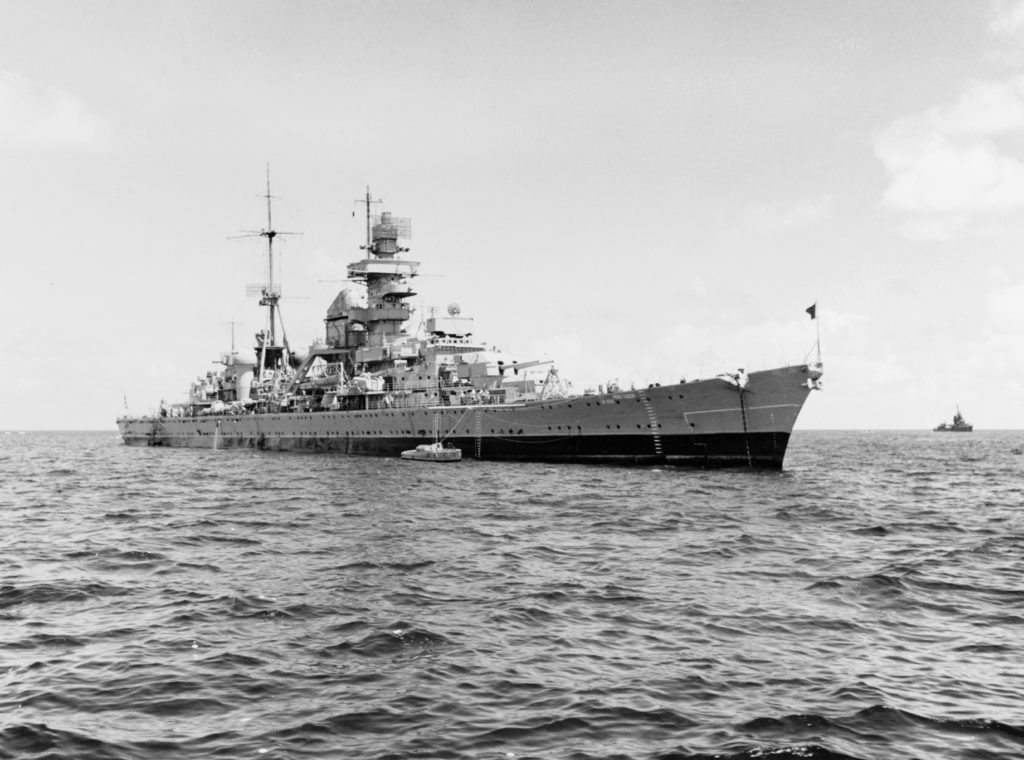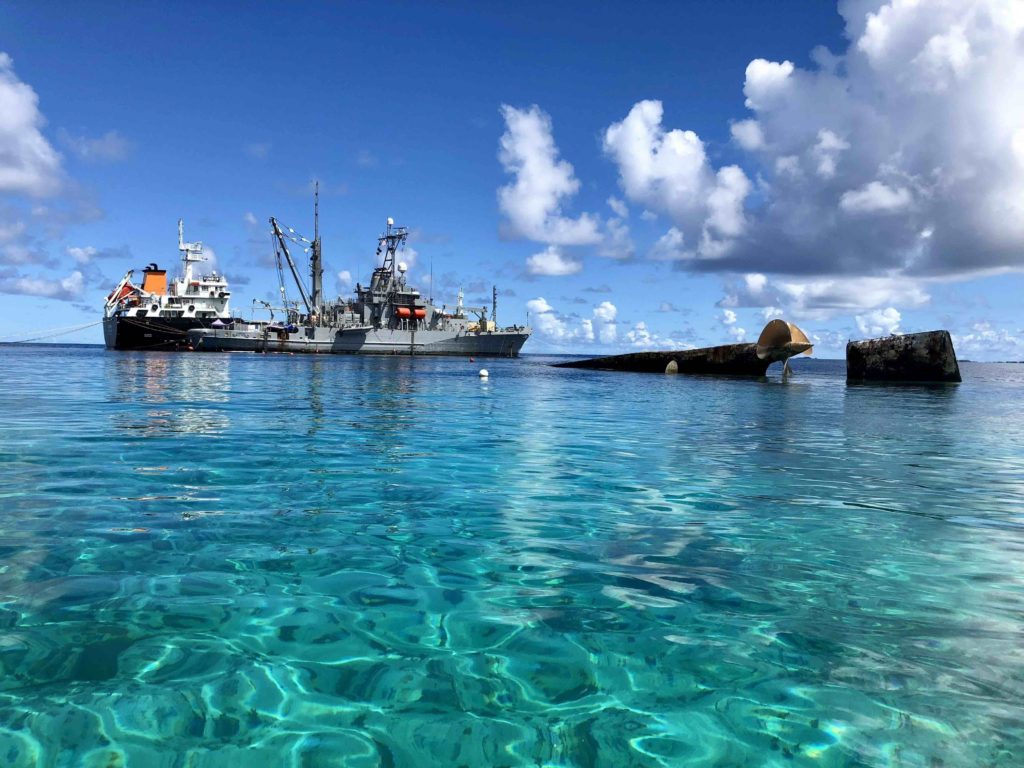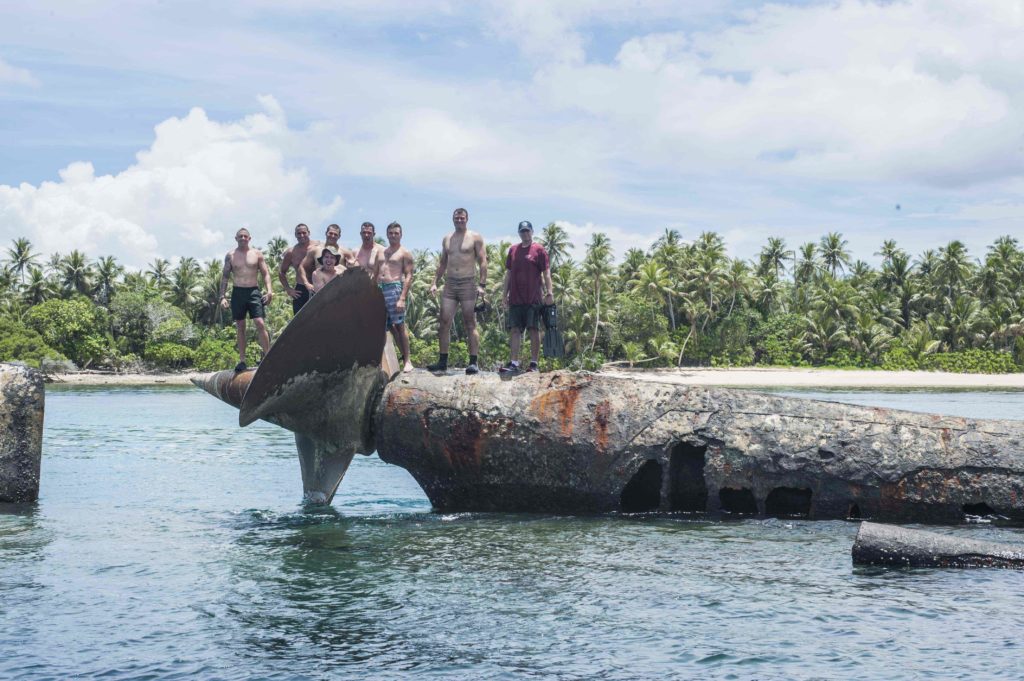Marshall Islands
Death of a Prince
The namesake of one of Europe’s most famous military commanders lies upside down in a lagoon at Kwajalein Atoll in the Marshall Islands. Roderick Eime recalls the extraordinary
life and death of this famous warship.

Roderick Eime
September 4, 2019The story of the famous German WWII heavy cruiser, Prinz Eugen, one of the few large German warships to survive the global conflict, is a fascinating one and her voyage to destruction in the Marshall Islands just as intriguing.

The ship was actually the fourth naval vessel to carry the name of the famous, if controversial, French-Austrian general who commanded European armies for 50 years until his death in 1736.
One of five sister ships, the massive 19,000-ton warship was launched in 1938 and first took to the sea, battle ready, in 1940. Armed with eight 8-inch guns, the state-of-the-art warship could steam at an impressive 34 knots (60km/h) while fully loaded.
The ship’s most memorable action was as the raiding companion to the Bismarck during Operation Rheinübung and the Battle of the Denmark Strait in May 1941. The outcome of that famous battle is well known with the Royal Navy’s prize battlecruiser, HMS Hood, comprehensively destroyed by the awesome firepower of Bismarck and the loss of all but three of the ship’s 1418 men.
Enraged at the loss of Hood, Bismarck was pursued by all the RN’s available heavy ships and eventually sunk, while Prinz Eugen escaped and returned to occupied France. The rest of the Prinz’s war was mostly as a floating gun battery, shelling the advancing Soviet troops and covering the German retreat in the Baltic while avoiding the British bombers sent to destroy it.

After the German surrender and still in remarkably good condition, Prinz Eugen was taken by the US Navy as a prize and sailed to Boston still with the captain and some of her German crew aboard. But the Prinz did not behave for her new masters and gave trouble, especially with her main boilers. Not wishing to waste time on a technically unfamiliar ship, the US Navy decided the Prinz would be sent, via the Panama Canal, to the remote Pacific atoll of Kwajalein in the Marshall Islands and blown up along with numerous other captured and obsolete vessels during nuclear tests under Operation Crossroads at Bikini Atoll in mid-1946.
Prinz Eugen had to be towed to Kwajalein for the first test, Able, which it survived. It was then used in the second test, Baker, which it also survived, adding to the mystique of the vessel as a particularly tough warship of exceptional build quality.
Because of unanticipated clean-up and radiation issues, the third detonation in Operation Crossroads was cancelled and the entire program terminated. The disruption to the lives of the residents persists to this day and a display is dedicated to their plight at the Alele Museum in Majuro.
Despite surviving the two nuclear blasts, Prinz Eugen was still heavily contaminated even after efforts to clean off the radiation with brooms and fire hoses. As such, the ship could not re-enter service in any way and her metal was deemed too contaminated to salvage. Meanwhile, Prinz Eugen had begun to leak and was in danger of sinking. Unable to be repaired, it was towed to shallow waters and eventually took on enough water that it capsized and sank on 22 December 1946 at Enubuj at the southern end of Kwajalein, just a few kilometres from the present day airport.
In late 2018, the US Navy completed operations to extract nearly one million litres of fuel oil that was in danger of leaking into the waters off the lagoon.
Since the sinking, some items have been recovered such as a propeller and bell. Following an effort by former crew members, one propeller was returned to Germany in 1979 and is on static display at Laboe Naval Memorial near Kiel in Germany.

Today the stern of the upturned hull can still be seen and it is now safe enough to be explored by recreational divers and snorkellers.
For a ship that was engaged almost continuously throughout the war, it survived remarkably well despite a major collision with another ship and a torpedo strike. Many of the surviving German sailors recall the warship with fondness as a blessed vessel that saw them safely through many dangerous times.
Diving the wreck of Prinz Eugen
Divers anchor on the wooden wreck of a small hull in 30 feet of water opposite the screws. The hull rests against the reef, but there is an opening at the 90 foot level, just forward of the bridge.
The bow is at 110 feet and you can swim under it. There is easy access to most of the ship. The crew’s quarters are accessible with remains of bunks and personal effects. The mess area contains crockery; a latrine, machinery and fire-fighting gear is suspended on the deck. Amidships much has fallen onto the seabed including some AA guns and their mounts. Some items have been recovered from the bridge.
The armament; two large turrets with twin 8-inch barrels, large 4.1-inch guns, dual and quad AA guns are almost all still intact. Port torpedo tubes have torpedoes in them. The interior structure is fairly intact and is safe for exploration. The ship’s armament is intact; the 8-inch main batteries fell from their mountings when the Prinz Eugen capsized in 1946, and now lie upside down on the bottom. Smaller secondary armament and anti-aircraft weapons, although heavily encrusted with marine growth, are visible all along the length of the ship.
The portside torpedo launcher still remains, and a room nearby contains a large rack of torpedoes which should be considered dangerous and not disturbed. Although the bridge and superstructure are crushed against the bottom, many interesting items can be seen both on the vessel and on the sandy bottom beneath it.
Manta rays, large grouper, and grey reef sharks are common here, the marine life nicely rounding out the scenery afforded by this once proud warship.
© 2024 Pacific Island Living Magazine all Rights Reserved
Website by Power Marketing